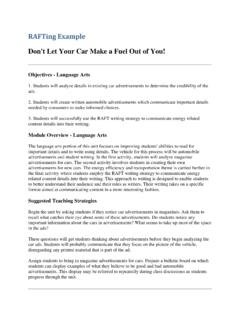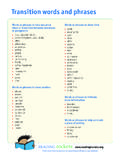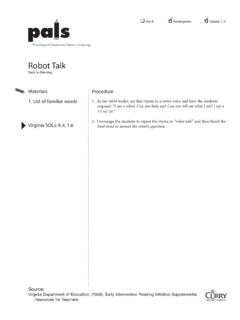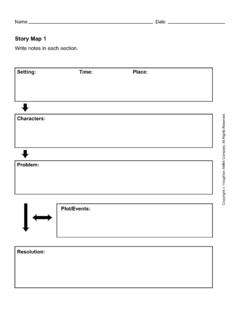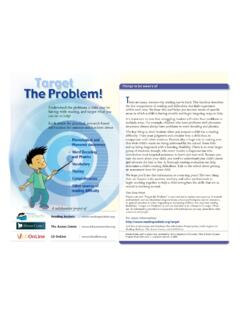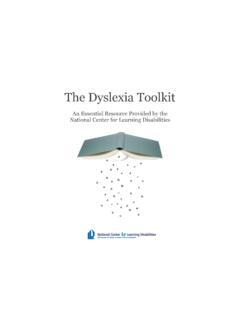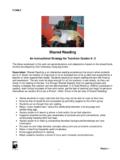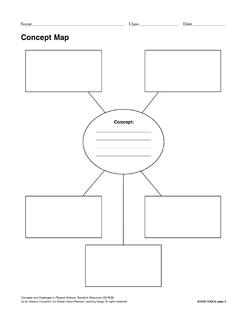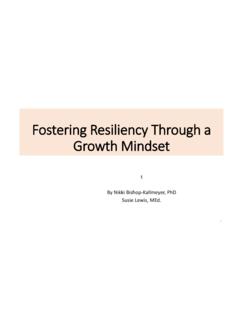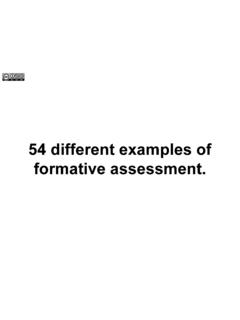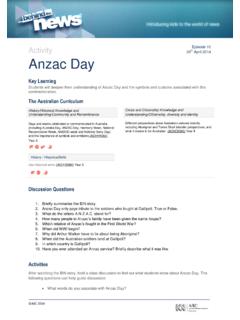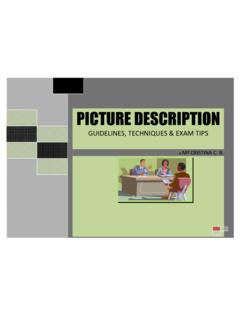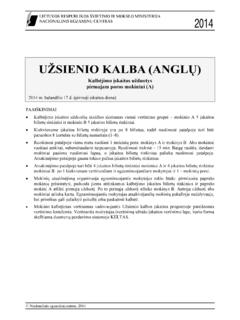Transcription of T Toolkit - Reading Rockets
1 Launching young readers The author study Toolkit What you'll find in our Toolkit : What is an author study ? .. page 1 Ten reasons to do an author study .. page 2. How to do an author study .. page 3. Set a purpose and goals .. page 4. Choose an author .. page 4. Read and respond to the books .. page 6. Research the authors .. page 8. Culminating projects .. page 9. author study resources .. page 12. What is an author study ? An author study is a unit lesson that gives students the opportunity to delve deeply into an author's life and body of work. Whether individually, in small groups, or as a class, students can: Critically evaluate an author's themes, characters, and writing style Make connections between the author's life and work Make personal connections between their own experiences and those of the author and his/her characters In addition to Reading several works by an author, key components of an author study include discussion, research, and a final project.
2 The Reading Rockets author study Toolkit will help you create a unit tailored to your instructional goals, as well as your students' interests and abilities. We suggest that you begin with How to do an author study , a helpful checklist to get you started. Visit us at: 1. The author study Toolkit Ten reasons to do an author study 1. Help students develop their Reading skills Author studies necessarily require lots of Reading , giving kids plenty of opportunities to improve their Reading fluency. In addition, teachers can use author studies to individualize Reading instruction by grouping students according to their Reading levels and helping them choose an appropriate author to study . 2. Build critical thinking skills With author studies, students learn to compare and contrast themes, analyze text and illustrations, and make connections between an author's life and his/her work and between the author's work and the reader's own life and work.
3 3. Improve writing skills An author becomes a writing mentor for readers as they read and study his/her work and respond to it through a variety of writing. This mentoring and students' writing responses can help kids build confidence in their writing and can even inspire them to become authors themselves. 4. Forge a deeper attachment to books kids often bond with their author, which makes Reading a more personal, fulfilling experience. kids may even want to read books that influenced their author, further expanding their Reading experience. 5. Establish a community of readers Author studies help classes, and even whole schools, form closer connections through shared Reading experiences. 6. Expose kids to different types of literary voices and styles Like adults, many kids prefer a particular kind of book, such as nonfiction, series fiction, or fantasy.
4 An author study can be used to persuade kids to branch out. In addition, some authors , including Newbery Medalists Avi and Lois Lowry, write in a variety of literary genres, which makes it easy for kids who study these authors to try out different types of Reading . 7. Boost information literacy skills A key component of author studies is researching an author's life and work, using print and online resources. This research provides a built-in opportunity for teachers to teach information literacy skills, especially how to find information sources and determine if they are credible. 8. Plug in easily to the curriculum Teachers can do short or long author studies, depending on available time. Visit us at: 2. The author study Toolkit 9. Make connections across the curriculum Choosing a nonfiction author is the easiest way for teachers to connect science, math, and/or history units with their language arts teaching.
5 But these connections also can be made using elements of a fiction author's books ( , setting in a particular time or place, animal or historic characters). 10. Add fun to the school day! Author studies are an entertaining way to spark students' life-long interest in Reading , a particularly important factor for new readers and reluctant readers. How to do an author study Follow the steps in our checklist below to develop a meaningful author study unit for your students. More detail on each step is found later in this document. Set a purpose and goals for the author study Think about your goals for the author study . Are you trying to tie the study to a curriculum unit? Is it something extra? Setting a purpose will help you to tailor the study and clarify student expectations for the assignment. Choose an author This choice is crucial to student enjoyment and learning.
6 You can develop a list of possible authors , or ask a school or public librarian for suggestions. Student polls are a good way to include students in the process. Read and respond to the books Decide how many books students will read and how long they have to do this Reading . Encourage students to journal their responses to the readings. Research the author(s), illustrator(s). You'll find plenty of information in print and online, and you can ask your school librarian for advice. Culminating projects Culminating projects give students an opportunity to respond to what they've learned about an author. Often, these projects involve presentations to the class or to a larger audience composed of parents or other classes. Visit us at: 3. The author study Toolkit Set a purpose and goals In The Allure of authors : Author Studies in the Elementary Classroom, Carol Brennan Jenkins argues there are three main types of author studies.
7 The first type focuses on an author study as a literary biography, in which students make connections between the author's life and work. The second type of author study is based on the reader's critical response to the books, focusing on an author's themes, characters, and writing, with little or no attention to the author's life. The third type of author study is based on the reader's own response to the books of a particular author, focusing on books can help readers relive and reflect on events in their own lives. While each of these types of author studies has its own merits, Jenkins urges teachers to consider pulling strands of all three types into their author studies, viewing an author study as a multiple re- sponse. In a multiple-response author study , students look at an author's books as literature while also doing research about the author's life.
8 Finally, they reflect on how they personally respond to the author's books. Think about which type of study appeals to you and fits into your curriculum needs. You should also consider what you hope your students will gain from the unit. Do you want to introduce them to new authors , or develop their research or writing skills? What will their projects be? Read the Culminating projects section for ideas. Answering these questions will help you design an author study unit that's just right for your class. Choose an author Choosing an author is a crucial task in setting up an author study and there are many facets to consider. Here are some key points to think about: Do you want to choose one author for the entire class to study ? Or do you want to create student groups (perhaps based on Reading ability) and have each group study a different author?
9 Will you choose the author(s) to be studied, or will you give students a voice in the matter? Including students in the selection process can be a good way to engage them, but students may be less likely to choose unfamiliar authors if they choose for themselves. How old are your students? If they are in early elementary school, then a picture book author might be best. A picture book author can also be a good choice for older students who are interested in illustration or if you, as the teacher, are interested in boosting your students' visual literacy or prompting Visit us at: 4. The author study Toolkit students' own writing. A related point: studying a picture book author might work well for reluctant or struggling readers; there are some picture book authors , such as Patricia Polacco, who tackle mature themes using the picture book format.
10 authors like Jacqueline Woodson, Kevin Henkes, and Jane Yolen, who write across genres and Reading levels, are good choices for author studies. Create an author study center in your classroom Choose a corner or other place where you can keep and display books for the author study . Or you can ask students where they think the author study center should be located. If you're doing a classroom-wide author study , take a tri-fold display board and decorate it with the author's name and photo. Students can add more information and more photos as they research the author. If students are doing different authors , you can use a tri-fold display board as a photo gallery of the authors . If you can have a computer in the author study center, students can create an online multimedia display, including websites, Facebook pages, and related resources.
